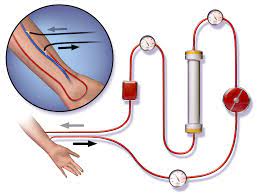What are the Latest Advancements in the Dental World?
Dentistry is a sector of expertise that is perpetually improving and advancing to serve patients’ needs better. You might be shocked to learn that there are many innovative ways to maintain aesthetically pleasing and healthy teeth if you have yet to see a dentist. However, the dental care sector is rapidly expanding, with various new trends and breakthroughs appearing in recent years.
People with dental problems rely on the dentistry globe to help them resolve their dental issues. Therefore, improvements in dental technology might provide you with cutting-edge fixes for old dental issues. Depending on the circumstances, your dentist may decide to use one of the various innovations in modern dentistry.
The major goal is to give you cutting-edge dental care that can be delivered more pleasant, productive, and effectively. Any dentist’s ultimate objective is to assist patients with their dental issues in a way that makes them feel at ease during the procedure. We, therefore, anticipate a future for robotic dentistry technology, particularly when it pertains to some dental treatments that people are serious about if dental technology can assist them in achieving better outcomes.
Therefore, we will explore all the latest advances in dentistry in this post so that you can understand their significance and technological efficacy for your treatments.
Some of the More Advanced Dental Care Methods and Techniques that Top Dentists are Implementing in Their Operations
-
Dental Cavity Monitoring with Lasers
Cavities are typically discovered by dentists using a device known as the explorer. They will prod about in your mouth with that equipment during an examination. They examine the tooth more closely to check for deterioration when it lodges in a tooth.
The diode laser, a more advanced method of identifying dental decay, is currently being utilized by several dentists around the globe. The dentist can then decide whether to recommend having the cavity addressed and the tooth filled or to monitor the tooth and compare the levels at the subsequent appointment.
The readout on the computer indicator is low because healthy teeth do not require fluorescence or shine when subjected to the diode laser’s wavelength. However, teeth with decay illuminate directly with the degree of decay, giving rise to increased indications on the screen.
Although the diode laser doesn’t always function on teeth with fillings, it may allow for earlier cavity diagnosis on other teeth. Also, remember that the diode laser does not replace X-rays because it only identifies decay in notches on the chewing edge. In contrast, bitewing X-rays can also discover decay between and inside teeth.
-
CAD/CAM Technology
Computer-aided design (CAD) and computer-assisted manufacturing (CAM) are the terms used to describe this technology in dental advancements. They add up to minimal trips to the dentist to finish treatments like dental crowns and bridges.
In the past, a dentist who wanted to place a crown on a patient’s teeth was required to create a cast of the tooth, create a temporary crown, and then wait for the dental research facility(lab) to produce a permanent one. With CAD/CAM technology, the tooth is prepared for the crown by drilling it, and a computer image is then taken. The crown is then made in-office using a machine that receives this imagery.
-
Greater Tooth Preservation with Thinner Dental Veneers
Dental veneers available today are thinner, custom-made casings or moulds applied to the front sides of teeth that are misaligned or otherwise unappealing with recent trends in dental work. Due to technological advancements, significantly thinner veneers can now be made using the same strength materials.
What benefit does this have for you? With the thinner veneers, the amount of tooth contouring necessary to prepare a tooth for a veneer, which entails increasing the tooth’s width, can be modest. More of the original tooth is preserved, and fewer portions of the tooth surface must be removed.
-
Improved Dental Filling and Bonding Resources Available
Due to advancements in dental bonding agents and bonding processes, if you have a broken tooth, it can now be restored to appear even more natural than it would have earlier. In contrast to the stuff utilized in the earlier days, the dental bonding material of nowadays is a synthetic resin that is more durable and shiny.
Dentists frequently apply resin layers to a tooth to help it bond and heal. They can more effectively match the bonding material to the original shade of the tooth thanks to the greater spectrum of hues that are now available. Many dentists now use tooth-coloured material or porcelain fillings instead of amalgam fillings when restoring teeth because they appear more realistic.
-
Improved Dental Health with Modern Gum Disease Solutions
Gum spaces develop when the bone and tissue that hold your teeth don’t fit tightly around them. When bacteria enter these spaces, bone loss and tooth loss ramp up. Several treatments can aid in undoing the harm. The more drastic ones, such as gum surgery to minimize the spaces, start with cleaning the root surfaces to eliminate tartar and plaque buildup. Treatment for gum disease now focuses on reconstructive techniques, shrinking spaces, and getting rid of bacteria.
Final Thoughts
The innovations in dentistry allow people to achieve picture-perfect teeth more pleasantly and efficiently, which aligns with current dental trends where everyone desires them. But if you have any dental issues, repair them right away. However, you can think of Signature Smiles as the knowledgeable and up-to-date solution for your dental needs.



